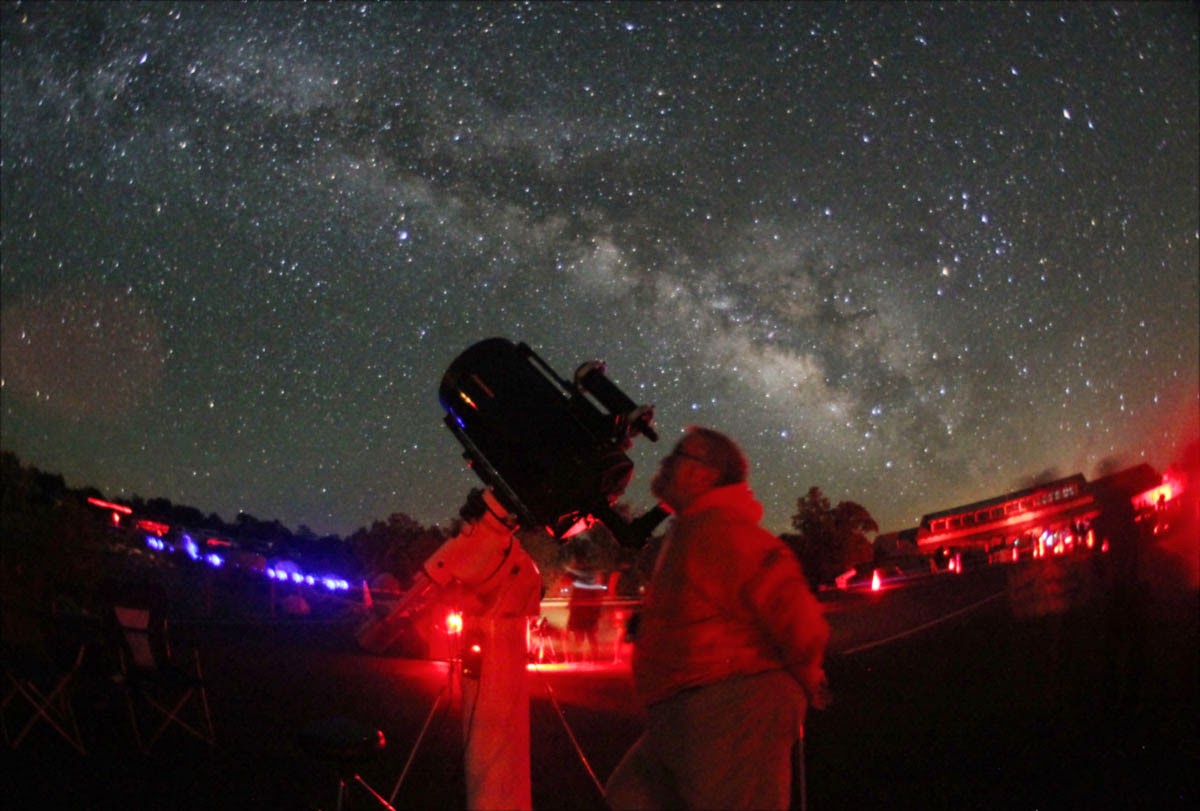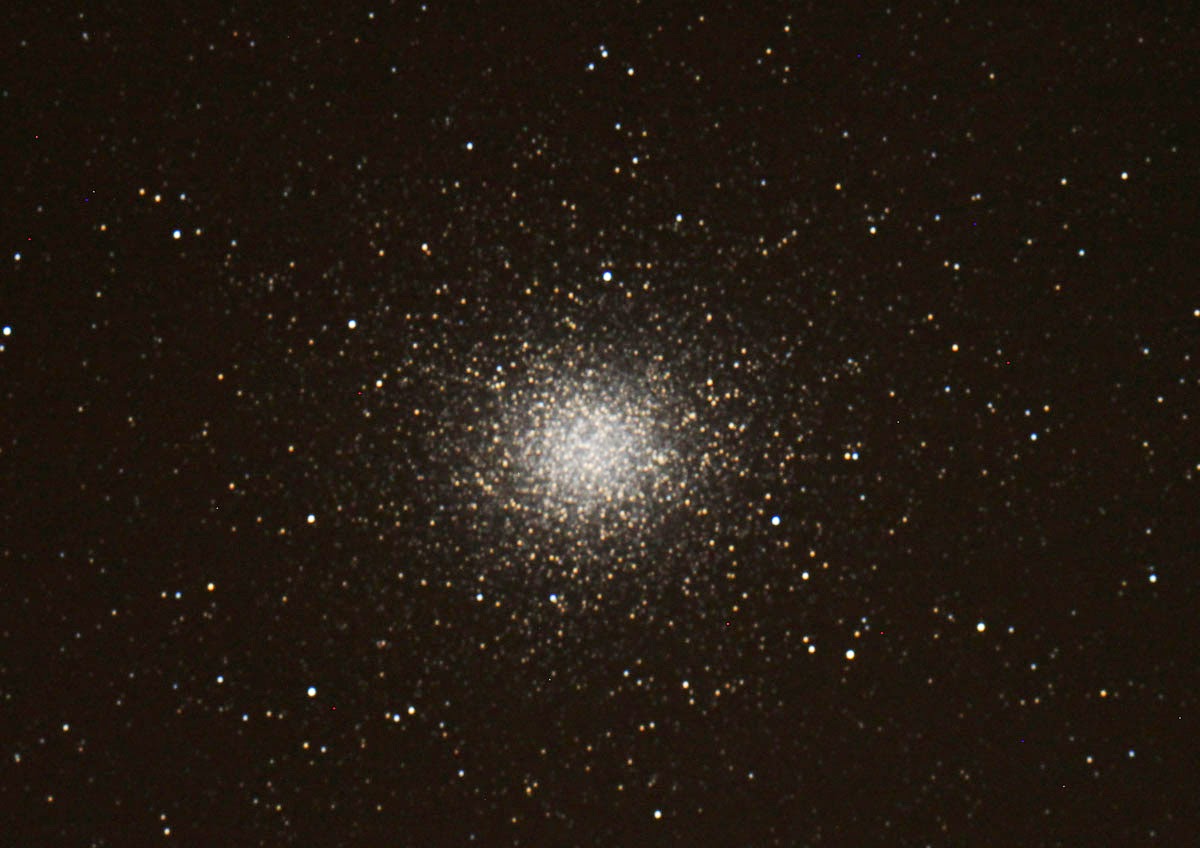From the title of this post, you would think it would be a no-brainer - every view of the Canyon is scenic! But you know me - I don't like to make life too easy - I'm thinking of night-time scenics! How about a night exposure that says "Grand Canyon" with stars and Milky Way stretching overhead... The problem, of course, is that the Canyon is awfully dark at night. Unless there is a little moon to provide some ambient light, it is literally a black hole! Take, for example the image at left, taken while imaging for the previous post on airglow observations at rimside. The minute-long exposure with a fisheye lens at F/2.8 if anything overexposes the sky (minor levels adjustments), but other than the lights of Phantom Ranch at the bottom of the Canyon, almost no Canyon details are seen, even though the Double Cluster and Andromeda Galaxy are seen at right central and far right. The small orange sky glow is from Page, about 70 air miles distant.
But it must be possible, since it has been done! I'm a big fan of Wally Pacholka, who makes a living shooting scenics, particularly night scenics at National Parks. While he has few of the Canyon at night (he must have noticed the same "black hole" effect I mentioned above), the one classic Canyon image he has is of the Desert View Watchtower under the Milky Way. The Watchtower is probably the one manmade emblem of the Canyon recognized by most. Built in 1932, designed by noted architect Mary Jane Coulter, it is based on ancient pueblo watchtowers. I've blogged about it before, but I was interested in improving on Wally's shot - one reason I've been practicing my Milky Way Panoramas the last month or two. It is also one of the reasons we went up to the star party at the Canyon a day early - to have a night off to attempt the shot. Unfortunately, it clouded up on our early arrival, so I sneaked away one night after the peak of the public had passed our telescope to make the 30 mile trip. But fate conspired against me - not only was the Watchtower brightly lit by a couple spotlights, but the viewing angle was wrong to get the tower under the arch of the Milky Way... I would have had to walk 50 meters out into the canyon to get the shot I wanted! The issue is illustrated at left - a brightly lit tower, Milky Way barely visible and decentered from where I wanted it...
But since I was there, I took some photo sets. Looking back on it now, I should have gone to the van for a pair of towels to help shutter the spotlights - oh well, next time. As a result, I needed to keep exposures brief to keep from blowing out the tower, and would have to try to stretch the Milky way back into visibility. Shown here is the result - a 4-frame mosaic of the tower and Milky Way, stretching to the Big Dipper on the far left to almost the center of our galaxy at right. The brilliant lights on the right side were another problem - the little café, though long-closed for the day remained lit up at night... At least the brilliantly lit gas station (also closed) wasn't a factor off the far right side of the frame. Besides the tower and Milky Way, a low-level display of airglow was going on (greenish glow near horizons), and the distant glow of Page, and perhaps the marina at Lake Powell.
A night later, while imaging for the most recent airglow post, I finally thought about and took a couple exposures that tried to show the "native" Canyon at night. Shown here is a view from Yavapai point, looking east towards the Desert View Watchtower, about 15 air miles distant. Yes, the spotlights are easily visible from that distance, as well as the snack bar, and also the brilliant gas station, visible from over the horizon from scattering. But Canyon details are finally visible in the 4 minute (!) exposure, lit up by starlight and the light of the Milky Way passing high overhead.
Well, practice makes perfect - I'll keep practicing and seeing if I can improve my technique. What I've learned so far - high ISOs help to shorten exposures, as do fast lenses (kit lenses at F/3.5 or slower just won't do!). Short exposures are needed to minimize star trailing caused by Earth's rotation. It is likely my post-processing that needs tuning - I'll post my mistakes here as I learn!
Merry Christmas 2025 From The Dept. Of Nance
1 week ago




































































